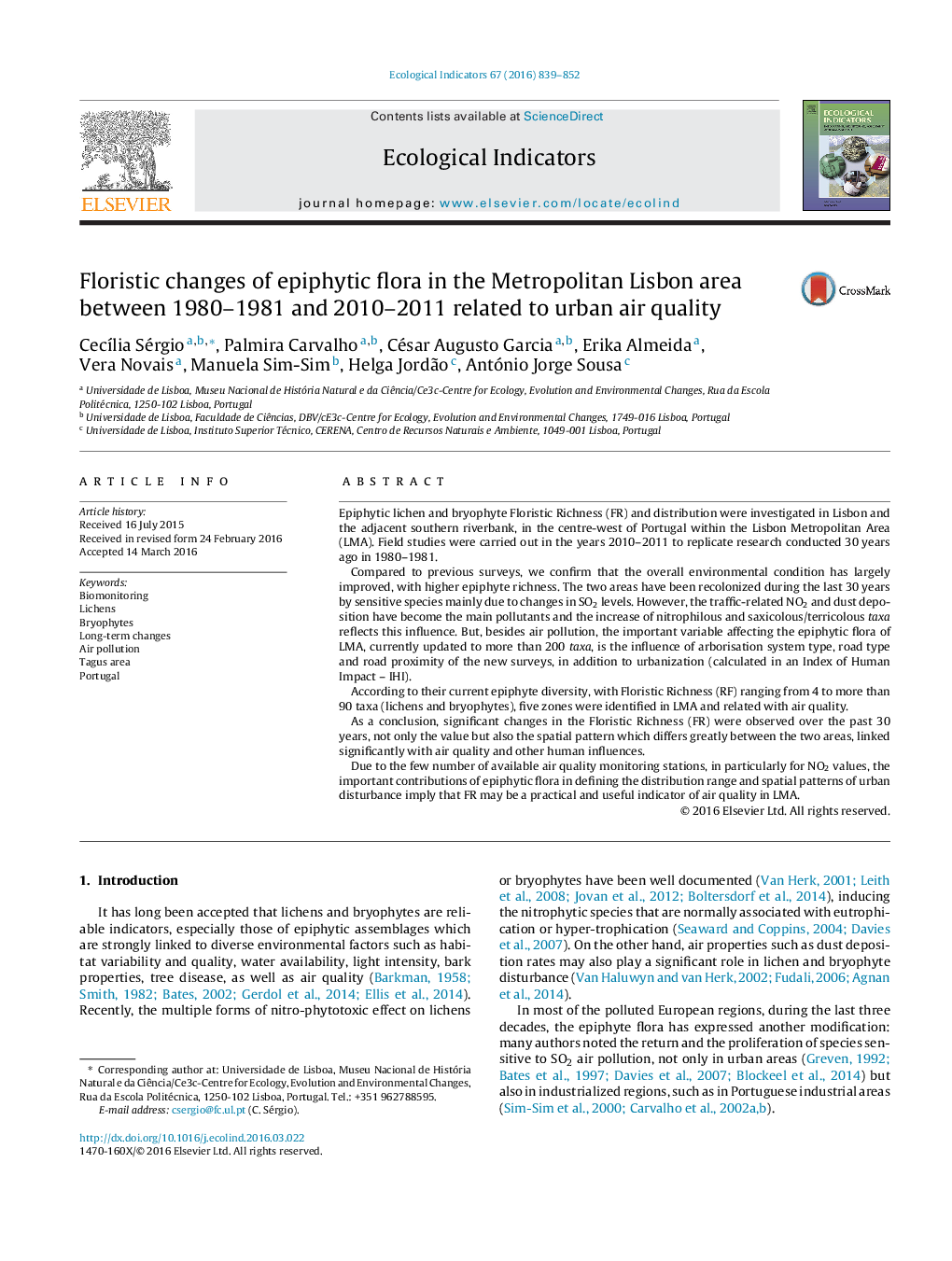| کد مقاله | کد نشریه | سال انتشار | مقاله انگلیسی | نسخه تمام متن |
|---|---|---|---|---|
| 4372929 | 1617135 | 2016 | 14 صفحه PDF | دانلود رایگان |
• We investigate the epiphytic diversity of lichens and bryophytes in Lisbon and Tagus Valley area.
• Field studies were carried out in the years 2010–2011 to replicate studies conducted 30 years ago.
• We reveal trends in the species’ distribution, in view of recent changes.
• We estimate changes in floristic richness (FR) linked to air quality and Index of Human Impact (IHI).
• Using geostatistical modelling we outline present-day air quality based on floristic classes.
Epiphytic lichen and bryophyte Floristic Richness (FR) and distribution were investigated in Lisbon and the adjacent southern riverbank, in the centre-west of Portugal within the Lisbon Metropolitan Area (LMA). Field studies were carried out in the years 2010–2011 to replicate research conducted 30 years ago in 1980–1981.Compared to previous surveys, we confirm that the overall environmental condition has largely improved, with higher epiphyte richness. The two areas have been recolonized during the last 30 years by sensitive species mainly due to changes in SO2 levels. However, the traffic-related NO2 and dust deposition have become the main pollutants and the increase of nitrophilous and saxicolous/terricolous taxa reflects this influence. But, besides air pollution, the important variable affecting the epiphytic flora of LMA, currently updated to more than 200 taxa, is the influence of arborisation system type, road type and road proximity of the new surveys, in addition to urbanization (calculated in an Index of Human Impact – IHI).According to their current epiphyte diversity, with Floristic Richness (RF) ranging from 4 to more than 90 taxa (lichens and bryophytes), five zones were identified in LMA and related with air quality.As a conclusion, significant changes in the Floristic Richness (FR) were observed over the past 30 years, not only the value but also the spatial pattern which differs greatly between the two areas, linked significantly with air quality and other human influences.Due to the few number of available air quality monitoring stations, in particularly for NO2 values, the important contributions of epiphytic flora in defining the distribution range and spatial patterns of urban disturbance imply that FR may be a practical and useful indicator of air quality in LMA.
Journal: Ecological Indicators - Volume 67, August 2016, Pages 839–852
